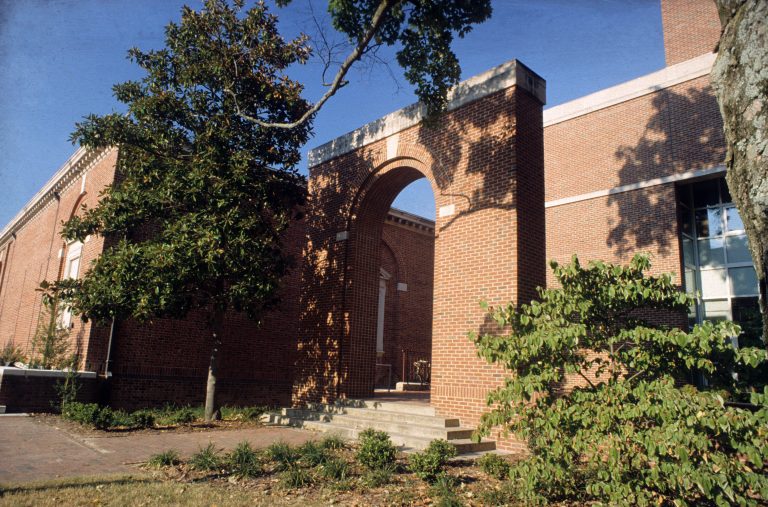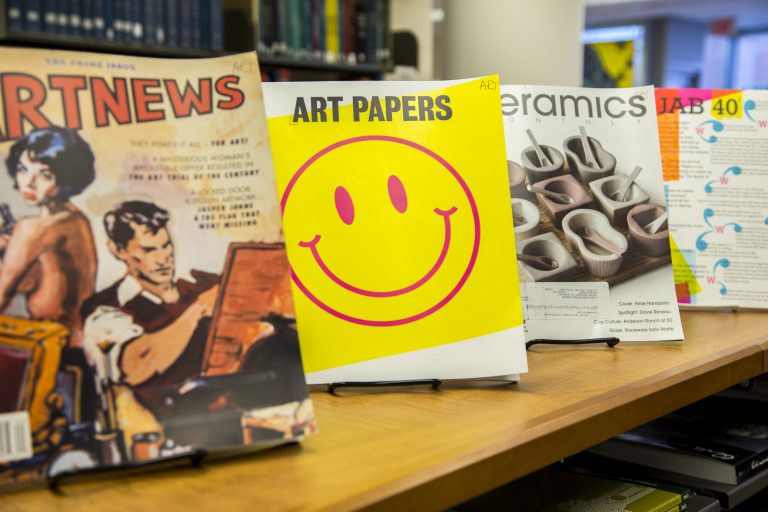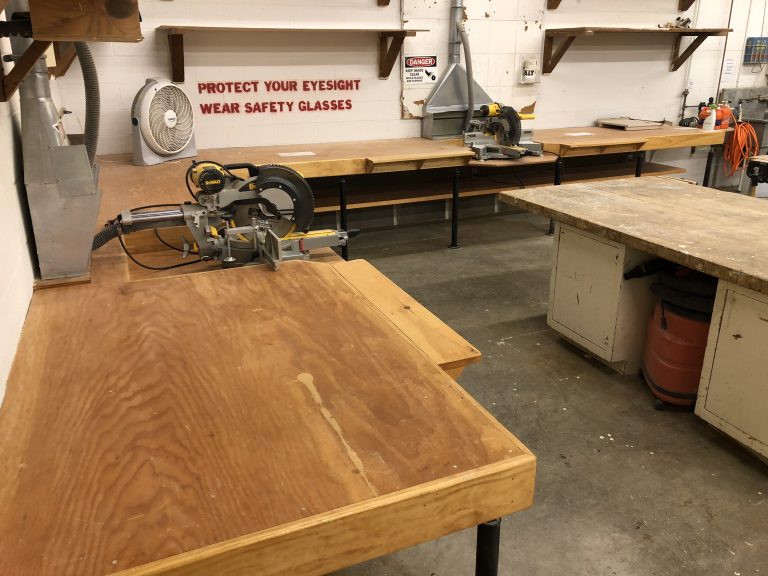Location: 108 Airport Drive
Contact: Art Lab Manager
Avery Newton
919/962-5594
newtnewt@unc.edu
The 17,686 square-foot Art Lab is located 1.8 miles north of the Hanes Art Center and houses the majority of the department’s sculpture facilities, including a fully-equipped tool room and complete metalworking, woodworking, and ceramic shops with both electric and pneumatic capabilities. Equipment and space also provide students with opportunities to work in other processes including, but not limited to, resins, fiberglass, stone, plaster, rubber, wax, and neon. Graduate student and faculty studios at the Art Lab range in size from 280 to 656 square feet. The facility also includes a 615-square foot “clean room” for photographing and displaying artwork, a spray paint room, a critique room, a tool room, and a 1,962- square foot dock.
The Art Lab houses six graduate-student studios, each of which is 480- to 580-square feet. Students are assigned to studios based on the space requirements of their work and class standing (second-year students generally having priority over first-year students). Two of the MFA studios are located within the metal shop, one is in the ceramics studio, and the other three are in the main hallway. There are also six faculty studios in the Art Lab, as well as a private studio for the visiting Artist-in-Residence. All studios are heated, and those on the north side of the building are air-conditioned.
Access to the facility will be scheduled by all patrons during the pandemic using the Art Lab by signing up on the Bookings calendar which you can find on your University Outlook email account. No one is allowed to just use the Art Lab at any time and must use this calendar. Only students currently enrolled in art courses at the Art Lab can sign up at this time. Here is the link: https://outlook.office365.com/owa/calendar/ArtLab@admin.live.unc.edu/bookings/ We will be limiting access to two individuals working at any one time in each shop and only one in the spray booth. The manager will receive an email from Bookings that tells me you have scheduled times to use the shop, in that email you should note if it is his regularly scheduled hours and will he be available for this, 9 am -12 pm and 1 pm-5 pm , Monday-Friday. The manager will act as your “buddy” when he has no conflicts when you are working during his shift and we will confirm this by email. If it is after hours you will need to notate who will be your “buddy’ and include them, Cc, in a separate email directly to the manager stating what shop and the hours you have signed up for. The reason for this is only one person can sign up for a block of time and no one can use power tools alone, so in the event of after-hours working, we’ll try this system.
NOTE: This Bookings Calendar is only for the Department of Art and Art History Art Lab. To schedule with BEAM, go here: https://beam.unc.edu/. To schedule with Morrison Art Studio, go to Arts Everywhere here: https://artseverywhere.unc.edu/.
Tool Room
The tool room is the hub for all activities in the Art Lab. This centrally-located room between the wood and metal shops houses all hand-held equipment, safety gear, and miscellaneous hardware for all shops. The tool room also houses a computer for research and communication available to students whenever the tool room is open.
Ceramics
The main ceramic studio is 1,181-square feet with a maximum ceiling height of 22 feet. This area houses the glazing chemicals, scales, mixing, and other equipment. Next to the main studio are a 192-square foot glaze-mixing room and two 186-square foot rooms used for mixing clay bodies, slip molding, and other ceramic-related needs. Storage is available in thirty-six 21″ x 21″ storage cubbies within the studio and in the cage outside.
Metal Shop
The 1,212-square foot metal shop has 22-foot ceilings, four movable “elephant nose” ventilation hoses, and a roof-mounted exhaust system for removing toxic fumes. The facility also houses two permanent welding areas, a brazing area, and several tables for laying out. It is next to the dock, where students can access a forging/ fabrication area.
Wood Shop
The spacious woodshop facility covers 1,383-square feet and has a 22-foot ceiling. Ventilation is provided through a roof-mounted exhaust fan and dust-collection hoses connected to other equipment. There are three 8′ x 3′ woodworking tables with vises, two racks, and eight shelves.








